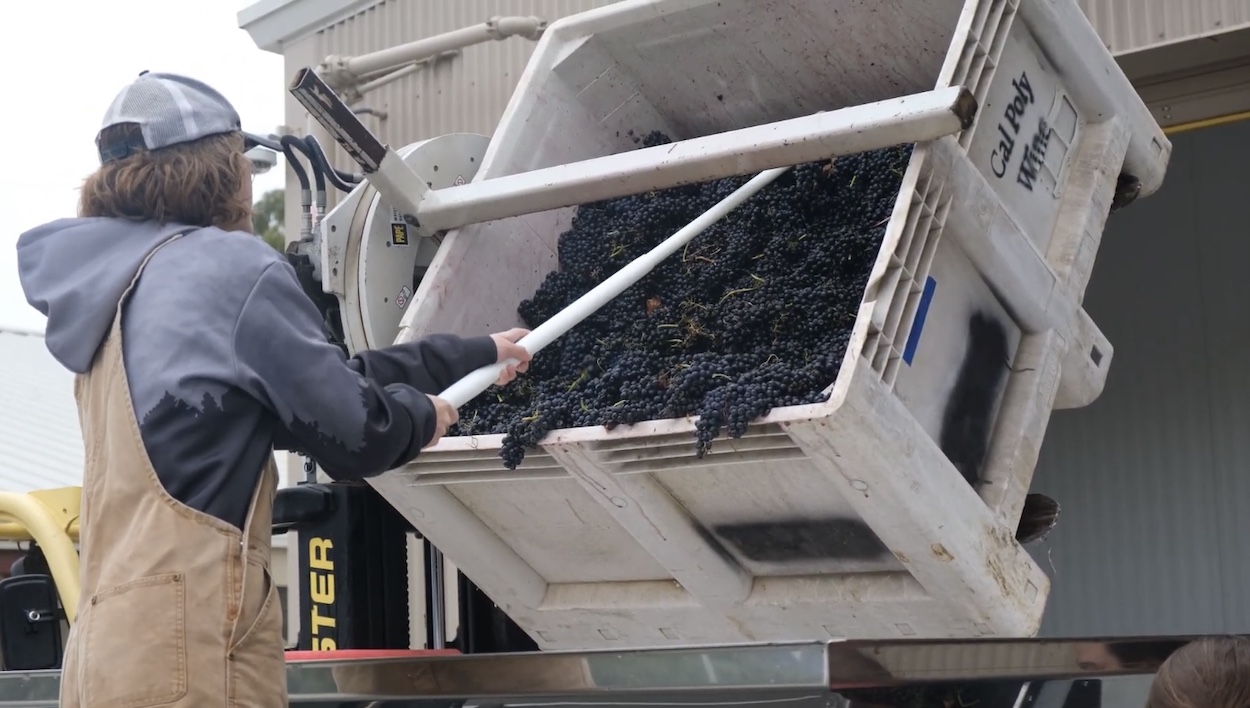Cal Poly Winery faces unique harvest season

This is a cross-published piece with Mustang News, more information can be found here.
Students at the Cal Poly Winery are hard at work on their fall harvest season. This year Syrah, a wine grape varietal that is new to Cal Poly, is the star of the show.
Syrah is a red wine that originates in France. Senior wine and viticulture student and winery intern Augusta Schulte said that Syrah “falls under the main category of wine grapes which is Vitis vinifera, but Syrah is the specific variety which originates from France. It eventually becomes Syrah for wine. Once the grapes are made into wine, the wine is called Syrah.”
This harvest follows the County of San Luis Obispo report that wine grapes surpassed strawberries for the county’s highest-earning agricultural product in 2023.
Despite this statistic, the Cal Poly Winery faced a distinctive 2024 harvest with lower yields than normal, with the exception of their Syrah.
“A couple years ago they graphed over the Pinot Noir from a part of our vineyard, the Trestle vineyard,” Schulte said. “They graphed over Syrah, and this is like the first harvest of that Syrah. And because the vines are really young, they’re incredibly vigorous. So we got, I think five tons of fruit from that crop this year.”
Students like Schulte work to sort and process the Syrah to be included in what wine and viticulture professor Federico Casassa has named the “lasagna method” for fermentation.
“This variety in particular, we are making it in a way in which we are keeping the clusters whole at the bottom of the fermenter,” Casassa said. “We top them with crushed berries, and then we put again whole clusters, and then top them with crushed berries so it almost resembles like a lasagna.”
The overall lower yield this harvest is in the winery’s favor. According to Casassa, the wine industry at large is facing an excess in supply and a drop in wine consumption.
“Yields this year, 2024, have been slightly lower than expected, and that’s a good thing because we’re going to have lower production and lower production is going to decompress the market,” Casassa said. “Cause if we have an overproduction, what is going to happen is that there is an oversupply and the price goes down.”
The Cal Poly Winery is split into three sections: commercial production, research and instruction. Students are involved in all departments and aspects.
In commercial production, grapes are grown in the on-campus Trestle Vineyard, then go through a sort and destem process and then into the fermenter to be made into wine for sale. Money made from the commercial side of the winery funds projects done within the program. Research is spearheaded by Casassa and four graduate students who try out different methods of winemaking. Lastly, students who take wine and viticulture classes can have the opportunity to make wine in their courses.
Cal Poly wine can be found in San Luis Obispo at the Cal Fresh Market and the downtown Cal Poly bookstore.

